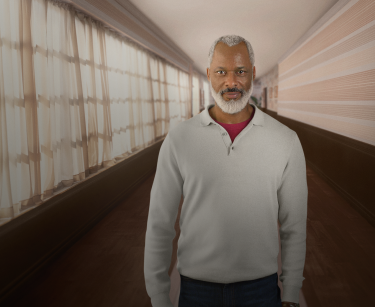

More than 1,300 adult patients in the US have chosen AMVUTTRA to treat the polyneuropathy caused by hereditary ATTR (hATTR) amyloidosis.*
AMVUTTRA is the first and only injection given 4 times a year to treat the polyneuropathy of hATTR amyloidosis in adults
Significant improvement in nerve function and quality of life
Quality of life was assessed by the Norfolk QoL-DN questionnaire that asked patients about the severity of their polyneuropathy symptoms, how often they experienced them, and what impact they felt they had on their daily lives
Nerve function was assessed using a scale called mNIS+7 that measured strength and sensation in the hands, feet, arms, and legs; reflexes; and blood pressure upon standing
Rapidly knocked down
TTR
Walking speed was assessed using the 10-meter walk test, a stopwatch-timed measure of a patient’s walking speed over 10 meters


